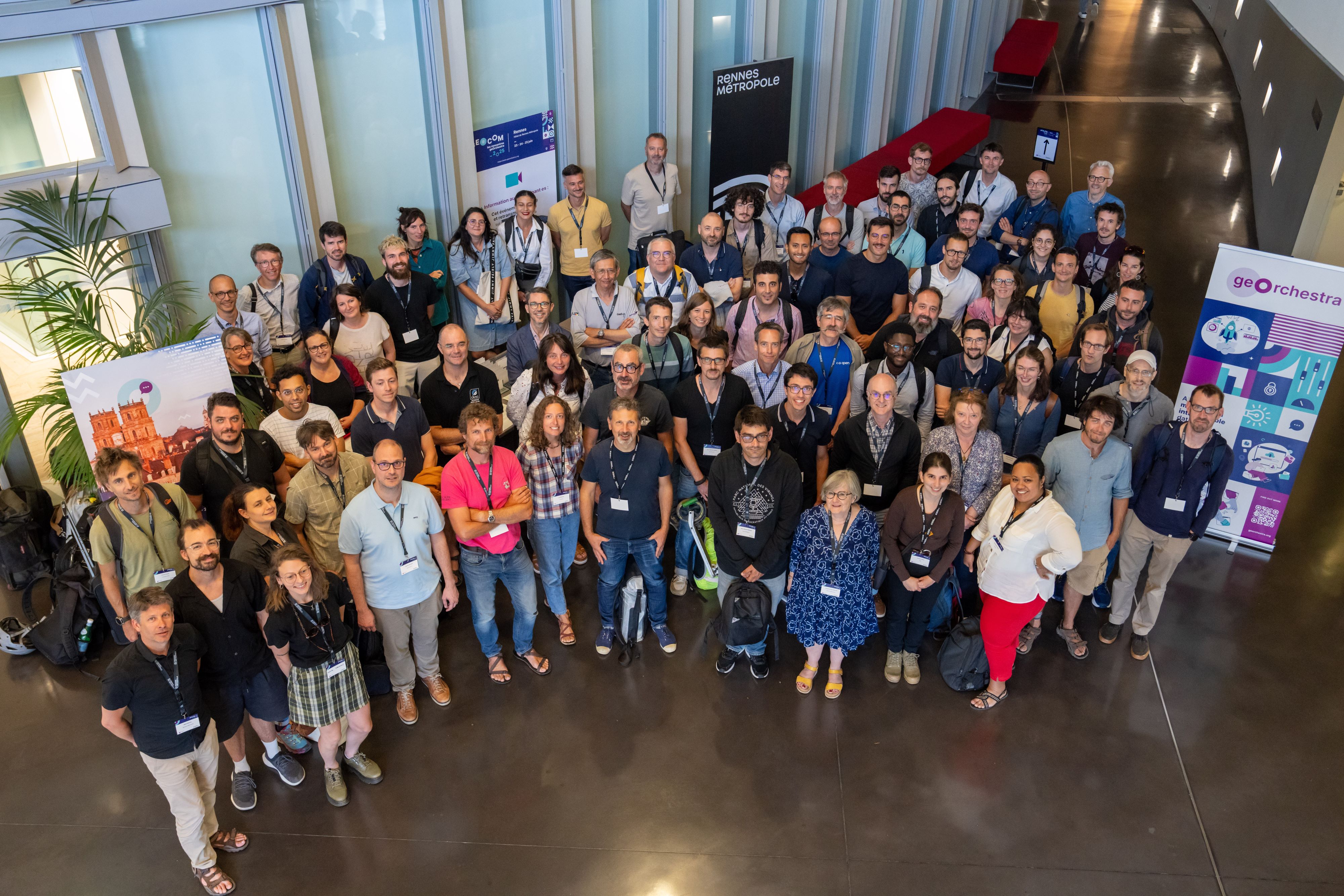geOcom 2025 at Rennes
Rennes Ville et Métropole - Rennes June 23 24 25

© Arnaud Loubry / Rennes Ville et Métropole
Presentations
Monday
What is geOrchestra?
Meeting Business Needs
Meeting Business Needs with geOrchestra
How does geOrchestra help us meet the business needs of our services, combining native and customized functionalities? Providing an application for managing DTDICT, offering thematic map models or even adapted environments to facilitate access to business data, enabling the selection and download of oblique aerial photographs of the territory, or facilitating collaboration among stakeholders for PLUi evolutions; all these needs are made possible thanks to the use of geOrchestra components and their integration into the local authority's IT system.
Philippe Laot, Louise Baillet, Rodolphe Goffinet - Rennes Métropole
Feedback on NGSI-LD/Geoserver Integration: Predictive Analysis of School Mapping
Presentation of the work done with Cerema as part of the Fabric’O project to predict and anticipate the number of students per neighborhood for schools dependent on the city, and closely monitor the evolution of population typology in the territory. The platform is based on the NGSI-LD specification and integrates several open-source tools including Twin ·Picks, Stellio, Superset, and GeoServer.
Benoit ORIHUELA - EGM
Tuesday
Valuing Data, Maps or Not
Participating in Data Opening
geOrchestra: from SDI to Territorial Data Platform. Roadmap and Feedback from the European Metropolis of Lille
How to move from an open data logic to a secure and shared datahub between actors of the same territory. The challenge of implementing territorial data governance, of which the datahub and its functional capabilities constitute a central tool.
Florent Berault - Métropole Européenne de Lille
Depositing, Describing, Finding Data
A Bit of Géoplateforme on Your Platforms
The Géoplateforme program chose to use the Datahub for the cartes.gouv.fr catalog interface. Since then, several contributions of various kinds have been made, including: * support for the object catalog (featurecatalog ISO19110), service entrusted to Camptocamp * the module for downloading pre-packaged data distributed by the Géoplateforme
Melodia Mohad - IGN
Datahub - New Features
The datahub (GeoNetwork-UI) is constantly evolving. Major new features are being integrated following exchanges within the community (IGN, geOrchestra, SwissTopo). A new version planned for summer 2025 should thus offer support for service and reuse metadata, the addition of an attribute catalog visualization module, pagination of WFS sources, support for Vector Tiles sources, restoration of a quick access bar, and better support for users on restricted access sources.
Laure-Hélène Bruneton - CampToCamp
Metadata Editor
The metadata editor (GeoNetwork-UI) has been available for production use since early 2025. This tool aims to simplify metadata entry, particularly in an OpenData context. Users are guided through a simple and clear process. The architectural choices of the GN-UI editor (pivot model, interface above APIs) make it compatible with more advanced use within GeoNetwork itself, with metadata editing being non-destructive of existing values. New features will be developed during the year, including multilingual support and templates.
Laure-Hélène Bruneton - CampToCamp
Depositing, Describing, Finding Data
How to diversify and centralize data at the scale of your territory with geOrchestra?
Local public authorities, across their fields of action and public policies, need data produced by multiple actors and heterogeneous sources. Use cases are emerging around the need to integrate and process external data within geOrchestra to serve analysis and knowledge of the territory. Levers and opportunities offered (or to be built) with geOrchestra?
Florent Berault - Métropole Européenne de Lille
Mutual Benefits of Integrating OpenStreetMap Data into geOrchestra
Both based on PostgreSQL/PostGIS, OpenStreetMap (OSM) and geOrchestra together offer often overlooked potential. By integrating OSM into geOrchestra, you can access advanced ETL (Extract, Transform, Load) capabilities, create native download points, or benefit from filtering, analysis, and contribution tracking features that are not natively available in OSM web tools. In return, geOrchestra can leverage the richness of OSM data, automatically updated every minute if necessary, to enrich business data or cross-reference it. The presentation will illustrate several concrete examples of these synergies.
Severin Menard - Les Libres Géographes